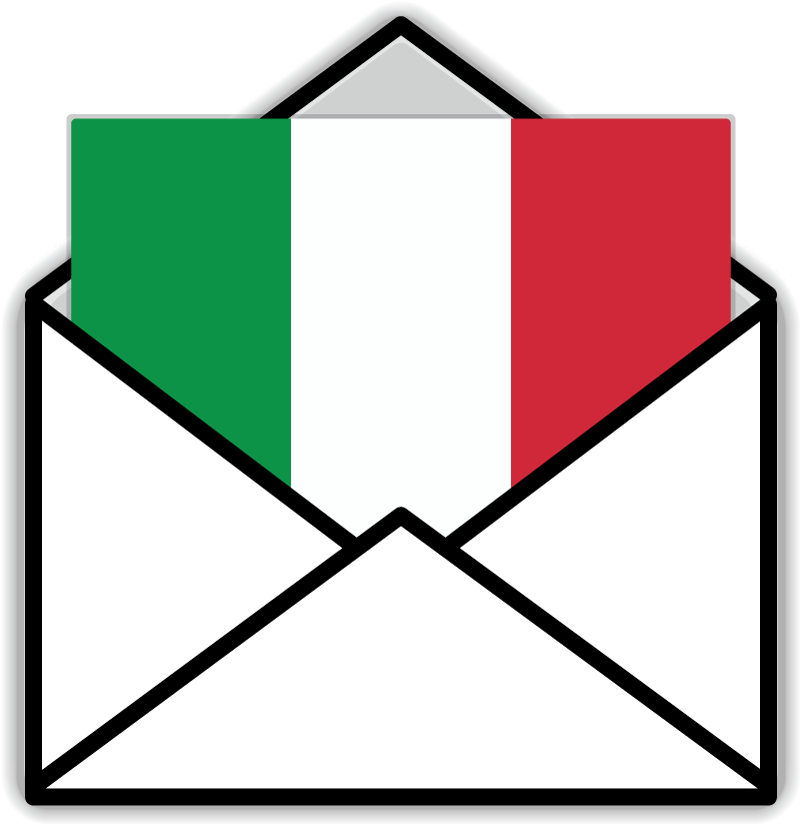My English teacher at university was an Irish woman who had lived in Italy for over a decade. One day, she admitted to us that numbers were still a pain for her. Having learned several languages myself, I know firsthand how difficult it is to master numbers in a foreign language. But whether you visit Italy on vacation or live here, you will notice that numbers are everywhere: departure dates, prices, bills, ticket numbers, and so on. That is why you should try to master them from the beginning of your learning journey.
Italian Numbers 1 – 100
Numbers 0 – 20
The first 19 numbers have to be learned by heart.
| 0 | Zero |
| 1 | Uno |
| 2 | Due |
| 3 | Tre |
| 4 | Quattro |
| 5 | Cinque |
| 6 | Sei |
| 7 | Sette |
| 8 | Otto |
| 9 | Nove |
| 10 | Dieci |
| 11 | Undici |
| 12 | Dodici |
| 13 | Tredici |
| 14 | Quattordici |
| 15 | Quindici |
| 16 | Sedici |
| 17 | Diciassette |
| 18 | Diciotto |
| 19 | Diciannove |
| 20 | Venti |
Numbers 20 – 100
To learn the numbers from 20 to 99, it’s preferable to learn the tens first.
| 20 | Venti |
| 30 | Trenta |
| 40 | Quaranta |
| 50 | Cinquanta |
| 60 | Sessanta |
| 70 | Settanta |
| 80 | Ottanta |
| 90 | Novanta |
Once you’ve memorized these numbers, all you have to do now is match them to the numbers 1 through 9.
Examples:
| 21 | Ventuno |
| 22 | Ventidue |
| 23 | Ventitré |
| 24 | Ventiquattro |
| 25 | Venticinque |
| 26 | Ventisei |
| 27 | Ventisette |
| 28 | Ventotto |
| 29 | Ventinove |
Now repeat the pattern through number 99. With a couple of exceptions, this is a fairly consistent pattern.
When using the numbers 1 (uno) and 8 (otto), the decimal numbers will drop the last vowel. The reason for this is to avoid using two vowel sounds at the same time.
So you’ll say:
Vent-uno, instead of venti–uno (21)
Vent-otto, instead of venti-otto (28)
The same pattern applies for all numbers with 1 and 8 through 99.For example:
- 58 is cinquantotto
- 71 is settantuno
- 81 is ottantuno
- etc…

Test Your Italian
Not sure what your Italian level is? I’ve created a free online Italian test to help you determine it.Italian Numbers 100 – 999
Unlike English, we don’t say “One Hundred” in Italian; instead, we say “cento,” which means “hundred” by itself. “Cento” is an invariable word, so it’s always the same.
To express a multiple of “cento”, add numbers 1-9 before “cento”.
| 100 | Cento (and NOT ‘un cento’) |
| 200 | Duecento |
| 300 | Trecento |
| 400 | Quattrocento |
| 500 | Cinquecento |
| 600 | Seicento |
| 700 | Settecento |
| 800 | Ottocento |
| 900 | Novecento |
How to read the hundred in Italian:
To read the hundreds in Italian, follow this pattern.
hundreds + decimals
for example:
112
cento + dodici = centododici
345
trecento + quarantacinque = trecentoquarantacinque
450
quattrocento + cinquanta = quattrocentocinquanta
The pattern is the same through 999!
Italian Numbers 1000 – 1 million
The Italian word for a thousand is “mille”.
When it comes to multiples of a thousand, mille becomes “mila”.
| 1000 | Mille (and NOT ‘un mila’) |
| 2000 | Duemila |
| 3000 | Tremila |
| 4000 | Quattromila |
| 5000 | Cinquemila |
| 6000 | Seimila |
| 7000 | Settemila |
| 8000 | Ottomila |
| 9000 | Novemila |
| 10000 | Diecimila |
| 20000 | Ventimila |
| 70000 | Settantamila |
| 100000 | Centomila |
How to read the thousands in Italian
To read the thousands in Italian you will follow this order
thousand + hundred + decimals
For example:
1654
mille + seicento + cinquantaquattro
5647
cinque + mila + seicento + quarantasette
10.220
dieci + mila + duecento + venti
600.410
seicento + mila + quattrocento + dieci
The pattern is the same through 999999!
The word for million is milione
the word for billion is miliardo
How to say “the years” in Italian
English speakers divide the year into two parts, so 2023 is read as twenty-twentythree. This is not possible in Italian.
To read a year, you should read it as a regular number, e.g. two thousand twenty-three.
So, 2023 is read duemilaventitre
How to say a date in Italian
Let’s use the day of the Unification of Italy, as an example:
- 17 marzo 1861 (diciassette marzo milleottocentosessantuno)
Unlike English, where you have month + number + year, the Italian pattern goes like this: number + month + year .
Another significant difference from English is the use of ordinal numbers rather than cardinal ones (17 and not 17th)
Useful expressions with numbers
| Italian | English |
|---|---|
| Una decina | A dozen |
| Centinaia di | Hundreds of |
| Migliaia di | Thousands of |







